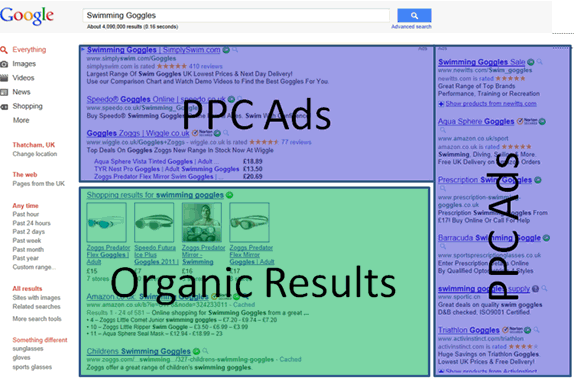You may have heard about pay-per-click advertising which is also referred to as PPC, search engine marketing (SEM), keyword advertising or paid search. I still find it a challenge to explain exactly what PPC advertising is despite working in PPC Management for over five years because there are so many interpretations and misconceptions floating around. This form of online advertising is still seen as an alien concept, I think this mainly due to the fact that unlike traditional forms of advertising such as TV, newspapers, radio most people have a limited understanding of how it works. So here goes – a top level explanation.
PPC advertising is a form on online advertising that is used to increase the number of people visiting your website. Lots of businesses have identified the need to have a website so spend a lot of time and money to produce a well structured, designed and search engine optimised (SEO) website. Then reality hits and they realise the work doesn’t stop there you need to make sure your site can be found and encourage potential customers to visit your website.
So how do you do this? The answer – PPC advertising. It is the perfect method of online advertising to quickly make your site visible in the search engines and to start generating traffic to your site.
The most common form of PPC ads are displayed on search engine results pages (SERPs) above and to the right-hand side of the organic results in response to the users search term. They are clearly labelled as ‘Ads’ or ‘Sponsored Results’ to differentiate them from the organic listings.
The image below shows the difference between PPC ads and organic listings for a Google results page.

PPC advertising is very flexible and quick to set up in comparison to other types of online advertising. In future posts I will cover how PPC works, the set up process, ongoing management of your campaigns and some helpful tips and advice.





